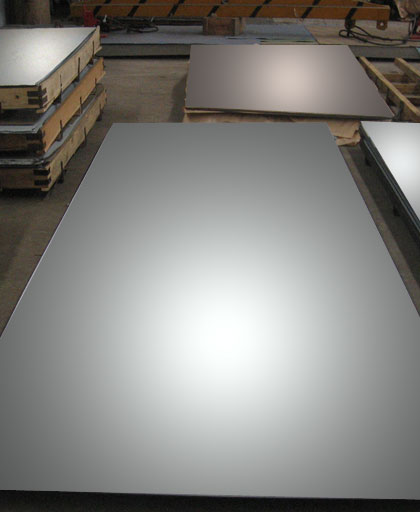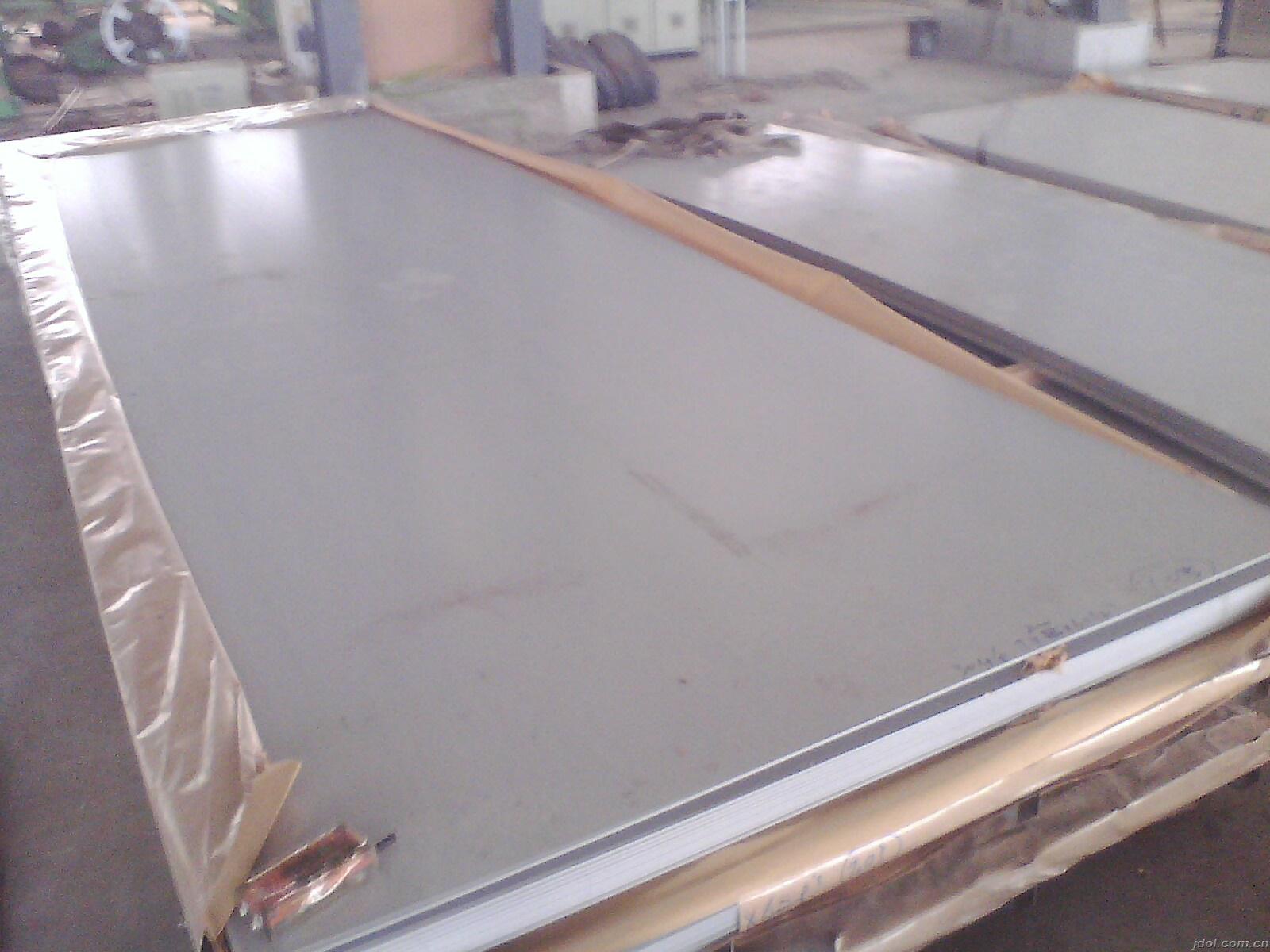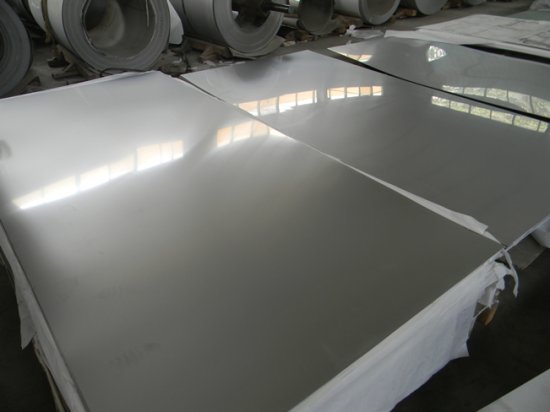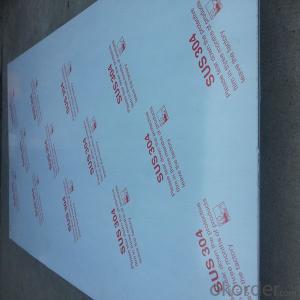201/304/316/430 Cold Rolled Stainless Steel Sheet Manufacture
- Loading Port:
- Shanghai
- Payment Terms:
- TT OR LC
- Min Order Qty:
- 3 m.t.
- Supply Capability:
- 20000 m.t./month
OKorder Service Pledge
OKorder Financial Service
You Might Also Like
Item specifice
Stainless Steel Sheet
304 stainless steel is the most widely used in the 300 series stainless steel. Its anti-corrosion property is stronger than the 200-series stainless steel, but the anti-acid property is worse than 316. 304 stainless steel have a good resistance in high temperature and the excellent corrosion resistance. 304 stainless steel is more expensive than 201, cheaper than the 316.
1. Commodity: 304 Stainless Steel
2. Technique: Cold Rolled/hot rolled Stainless Steel
3. Grade: 304 Stainless Steel
4. Type: Stainless Steel Sheet/coil
5. Finish: 2B/Ba/8K/Emboss/Etch
6. Edge: mill edge /silted edge
7.Size:1219mm*2438mm,1219mm*3048mm,or as customized
Thickness | 0.3mm-3mm |
Width | 1000mm-2000mm |
Length | 1219mm ,3050mm,or as your requirement |
Material | 201/304/316 |
Standard | AISI,DIN,GB,JIS |
Finish | 2B,BA, Hot rolled, No.1-No.4 |
Stock | Width:1000mm,1219mm,1500mm,1800mm,2000mm Length:2000mm,2438mm,2500mm,6000mm,6096mm |
Usage | Tableware, cabinets, cooking utensils, wate heaters, architectural decoration, chemical industry and so on |
Minimum Quantity | 5 pieces |
Technique | Cold rolled and Hot rolled |
Productivity | 10000 tons / month |
Terms of Pa | T/T |
stainless steel coil/sheets surface treatment
Characteristics and application | |
2B | The surface brightness and flatness of 2B is better than 2D. Then through a special surface treatment to improve its mechanical properties, 2B could nearly satisfy comprehensive uses. |
NO.3 | Polished with abrasive belt of git#100#200,have better brightness with discontinuous coarse stria, used as inner and external ornaments for building, electrical appliances and kitchen utensils etc. |
NO.4 | Polished with abrasive belt of grit#150#180,have better brightness with discontinuous coarse stria, but thinner than NO.3, are used as bathtub buildings inner and external ornaments electrical appliances kitchen utensils and food processing equipment etc, |
HL | Polished with abrasive belt of grit#150#320 on the NO.4 finish and has continuous streaks, mainly used as buildings ornaments elevators, door of building, frontal plate etc. |
BA | Cold rolled, bright annealed and skin-passed, the product have excellent brightness and good reflexivity like mirror, kitchen apparatus, ornament etc |
8K | The product have excellent brightness and prefect reflexivity can be the nirror |
Products Pictures:

cold rolled stainless steel sheet(aisi201 sus304)

hot rolled stainless steel sheet,thick stainless steel sheet

- Q:Are stainless steel sheets suitable for chemical storage tanks?
- Yes, stainless steel sheets are suitable for chemical storage tanks. Stainless steel is known for its corrosion resistance and durability, making it an excellent choice for storing various chemicals. It is resistant to many corrosive substances, including acids, alkalis, and solvents, which are commonly stored in chemical storage tanks. Stainless steel sheets also have a high strength-to-weight ratio, allowing for the construction of tanks that can withstand the pressure and weight of the chemicals. Additionally, stainless steel is easy to clean and maintain, making it a hygienic option for storing chemicals. Overall, stainless steel sheets are a reliable and suitable material for chemical storage tanks.
- Q:Are stainless steel sheets suitable for pharmaceutical equipment?
- Indeed, stainless steel sheets prove to be appropriate for pharmaceutical equipment. The pharmaceutical industry extensively utilizes stainless steel owing to its exceptional resistance to corrosion, remarkable strength, and hygienic attributes. Its ease of cleaning and sterilization renders it perfect for applications that demand utmost cleanliness and product purity. Moreover, stainless steel displays resistance to chemicals and can endure extreme temperatures, thereby making it suitable for a multitude of pharmaceutical procedures. Furthermore, stainless steel sheets can be tailored in terms of thickness, size, and finish to fulfill precise equipment specifications. On the whole, stainless steel sheets deliver longevity, dependability, and the indispensable sanitary properties indispensable for pharmaceutical equipment.
- Q:Can stainless steel sheets be used for solar water heaters?
- Yes, stainless steel sheets can be used for solar water heaters. Stainless steel is a durable and corrosion-resistant material, making it suitable for withstanding the harsh conditions of a solar water heating system. It can effectively absorb and retain heat, making it a good choice for the absorber plate in a solar collector. Stainless steel sheets also have excellent thermal conductivity, allowing for efficient heat transfer to the water. Additionally, stainless steel is a sustainable and environmentally friendly choice, as it is recyclable and has a long lifespan.
- Q:What are the different types of surface finishes for stainless steel sheets?
- Stainless steel sheets come in a variety of surface finishes, each with its own unique characteristics and appearances. Here are some of the most commonly used finishes: 1. The No.1 Finish, also known as hot rolled or annealed finish, is the most basic stainless steel finish. It has a rough, dull appearance with visible grain lines. This finish is typically used for industrial applications where aesthetics are not a priority. 2. The No.2B Finish is achieved by cold rolling the stainless steel sheet and then annealing it in a controlled atmosphere. This results in a bright, smooth finish with a semi-reflective appearance. It is often used for kitchen appliances, decorative trim, and architectural purposes. 3. The No.4 Finish is obtained by brushing the stainless steel sheet with abrasive materials, giving it a uniform, satin-like appearance. It is popular in commercial kitchens, elevator panels, and decorative applications that require a visually appealing and easy-to-clean surface. 4. The No.8 Mirror Finish is the most reflective surface finish available for stainless steel sheets. It involves polishing the surface to a mirror-like shine using progressively finer abrasives. This finish is commonly seen in decorative applications like architectural features, automotive trim, and jewelry. 5. The Hairline Finish is achieved by sanding the stainless steel sheet with fine abrasives in a consistent linear pattern. This creates a textured, brushed appearance and is often used for decorative purposes such as wall cladding, furniture, and signage. 6. The Bead Blasted Finish is achieved by bombarding the stainless steel sheet with small glass beads at high pressure, resulting in a uniform, matte texture. It is commonly used in architectural applications like column covers, elevator doors, and facade panels. These are just a few examples of the different surface finishes available for stainless steel sheets. Each finish offers its own visual effects, textures, and levels of reflectivity. The choice of finish depends on the desired aesthetic, functionality, and requirements of the application.
- Q:Stainless steel sheet welding method, thickness of 0.5mm
- Welding power university, rated matrix current, peak current, pulse frequency, pulse width and other parameters are not the same.
- Q:Are stainless steel sheets suitable for hygienic applications?
- Yes, stainless steel sheets are highly suitable for hygienic applications. Stainless steel is corrosion-resistant, non-porous, and easy to clean, making it ideal for environments that require strict hygiene standards, such as hospitals, food processing plants, and laboratories. Additionally, stainless steel has antimicrobial properties that inhibit the growth of bacteria, further enhancing its suitability for hygienic applications.
- Q:What are the different types of stainless steel sheet alloys?
- There are several different types of stainless steel sheet alloys, including austenitic, ferritic, martensitic, and duplex stainless steel. Each alloy has unique characteristics and is suitable for various applications based on factors such as corrosion resistance, strength, and heat resistance.
- Q:When milling the stainless steel plate, how can he deform?
- 2. clamping points should be selected so that the workpiece does not vibrate when it is machined3., tools should be selected, choose easy to cut stainless steel cutting tools
- Q:Are stainless steel sheets resistant to scaling?
- Yes, stainless steel sheets are resistant to scaling. Scaling refers to the formation of oxide layers on the surface of a material when exposed to high temperatures. Stainless steel contains a high percentage of chromium, which forms a protective layer of chromium oxide on the surface when exposed to oxygen. This oxide layer acts as a barrier and prevents further oxidation or scaling of the stainless steel. Additionally, the presence of other alloying elements such as nickel and molybdenum further enhances the resistance of stainless steel sheets to scaling. Therefore, stainless steel sheets are highly resistant to scaling, making them suitable for applications in high-temperature environments.
- Q:Are stainless steel sheets resistant to lactic acid?
- Yes, stainless steel sheets are generally resistant to lactic acid. Stainless steel is known for its corrosion resistance, and lactic acid is not typically strong enough to cause significant damage to stainless steel surfaces. However, the resistance may vary depending on the specific grade and quality of stainless steel used. It is always recommended to consult with a material expert or conduct proper testing to ensure the suitability of stainless steel sheets for specific applications involving lactic acid.
1. Manufacturer Overview |
|
|---|---|
| Location | |
| Year Established | |
| Annual Output Value | |
| Main Markets | |
| Company Certifications | |
2. Manufacturer Certificates |
|
|---|---|
| a) Certification Name | |
| Range | |
| Reference | |
| Validity Period | |
3. Manufacturer Capability |
|
|---|---|
| a)Trade Capacity | |
| Nearest Port | |
| Export Percentage | |
| No.of Employees in Trade Department | |
| Language Spoken: | |
| b)Factory Information | |
| Factory Size: | |
| No. of Production Lines | |
| Contract Manufacturing | |
| Product Price Range | |
Send your message to us
201/304/316/430 Cold Rolled Stainless Steel Sheet Manufacture
- Loading Port:
- Shanghai
- Payment Terms:
- TT OR LC
- Min Order Qty:
- 3 m.t.
- Supply Capability:
- 20000 m.t./month
OKorder Service Pledge
OKorder Financial Service
Similar products
New products
Hot products
Hot Searches
Related keywords





























